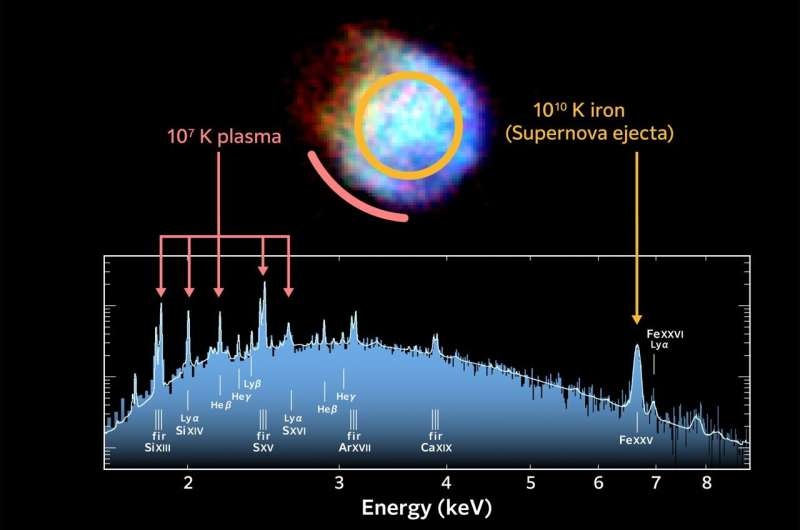The X-Ray Imaging and Spectroscopy Mission (XRISM) has made remarkable strides in unveiling the secrets of black holes and supernova remnants, revolutionizing our understanding of these celestial phenomena. This blog post explores the mission’s groundbreaking findings and their profound implications for the scientific community.

Decoding the Enigma of Supernova Remnants
Observations from the XRISM mission have turned up fresh details on the structure, movement and temperature of material in a supernova remnant called N132D.
To study this outflow, scientists used the XRISM’s Resolve instrument which resolved a complex doughnut structure of the remnant and wiped out previous assumption that is simple spherical shell. The observation is using a similar technique to that based on the Doppler effect, but it shows how fast the hot plasma contained in CTA 1 remnant is expanding, at an estimated rate of over 1,200 km/s.
XRISM also observed for first time that the remnant harbors iron heated to nearly 10 billion degrees Kelvin, a temperature not reached anywhere else in the Universe. Theoretically, they were sure this would happen but it has never before been seen.
Remnants of supernova are important to understanding the evolution of stars and lifes, they also play a crucial role in producing iron and disseminating it into interstellar space. The results from XRISM open a new window on these processes, providing new insights into massive star life and death.
Discovering the Secrets of Supermassive Black Holes
The XRISM mission, meanwhile, has advanced the understanding of a peculiar environment surrounding a supermassive black hole in the spiral galaxy NGC 4151.
This detailed view not only allows for a view of the distribution of matter in the region immediately surrounding the massive galaxy’s central black hole (which weighs in at some 30 million times that of our Sun), but also what is falling into it.
With its spectroscopic capability, XRISM observes a series of structures encircling the supermassive black hole, all the way from the disk ‘feeding’ the black hole to a doughnut-shaped torus. This is currently the only way in which anyone has been able to track what is happening to the gas surrounding the central “monster”.
Radio and infrared observations reveal the doughnut-shaped torus around black holes in other galaxies, but XRISM provides new intriguing observational data on how these monster celestial objects engulf matter around them. Understanding how material comes and leads the supermassive black holes surrounding it is essential for furthering our knowledge of these mysterious things.
Conclusion
The XRISM mission has been highly successful in uncovering the secrets of black holes and also supernova remnants; providing valuable information on how they form and develop as well. These pioneering findings highlight the remarkable performance of the XRISM telescope and herald many more striking results about the high-energy universe in the near future.
